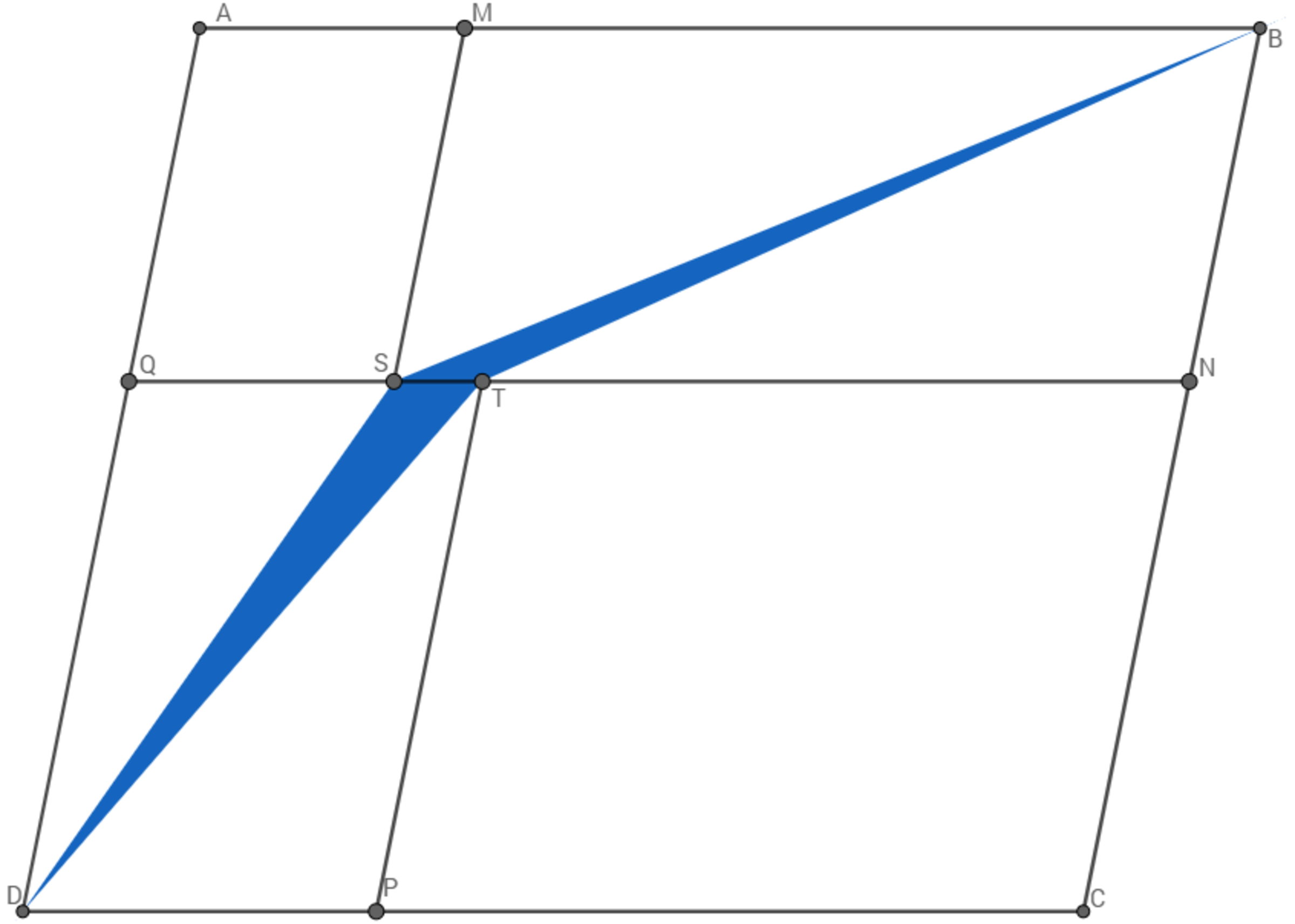The minorities
 The area of the parallelograms
,
,
, and
are respectively 12, 36, 48, and 24.
The area of the parallelograms
,
,
, and
are respectively 12, 36, 48, and 24.
What is the area of the part colored blue?
The answer is 5.
This section requires Javascript.
You are seeing this because something didn't load right. We suggest you, (a) try
refreshing the page, (b) enabling javascript if it is disabled on your browser and,
finally, (c)
loading the
non-javascript version of this page
. We're sorry about the hassle.
Let the height and base width of the big parallelogram A B C D be h and b respectively. Then the area [ A B C D ] = h b = 1 2 + 3 6 + 4 8 + 2 4 = 1 2 0 .
Since A M S Q and B N S M have the same height, S N Q S = [ B N S M ] [ A M S Q ] = 3 6 1 2 = 3 1 ⟹ Q S = 4 1 b . Similarly, T N Q T = [ C P T N ] [ D Q T P ] = 4 8 2 4 = 2 1 ⟹ Q T = 3 1 b .
Now, we note that the area colored blue:
[ B T D S ] = 2 1 ( S T ) h = 2 1 ( Q T − Q S ) h = 2 1 ( 3 b − 4 b ) h = 2 1 ⋅ 1 2 1 ⋅ b h = 2 1 ⋅ 1 2 1 ⋅ 1 2 0 = 5 Note that b h = 1 2 0